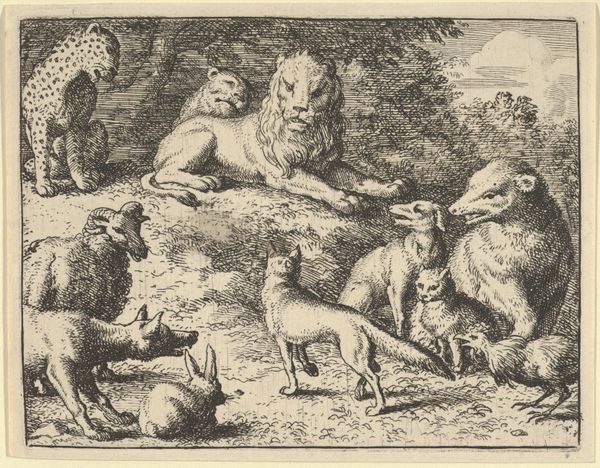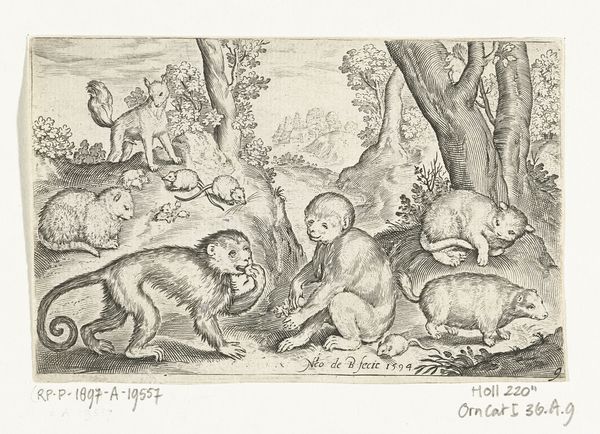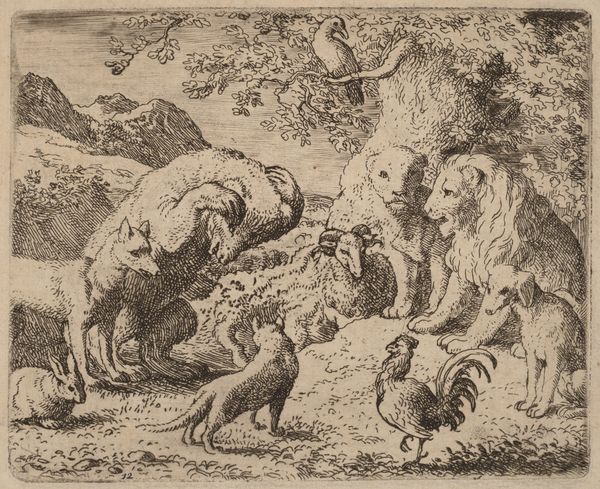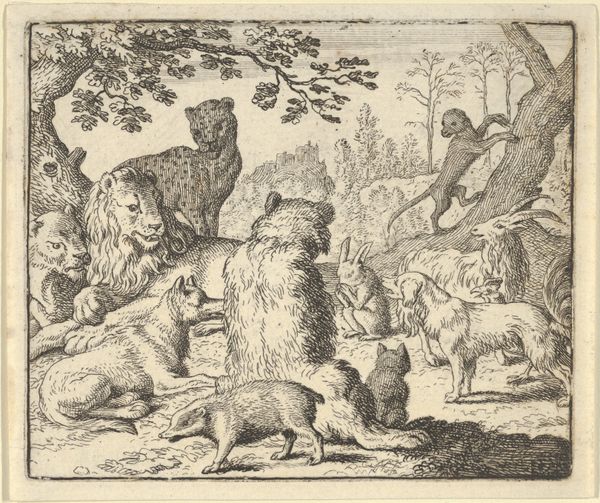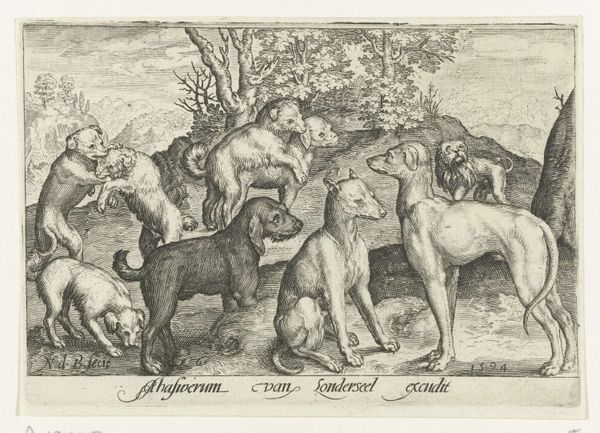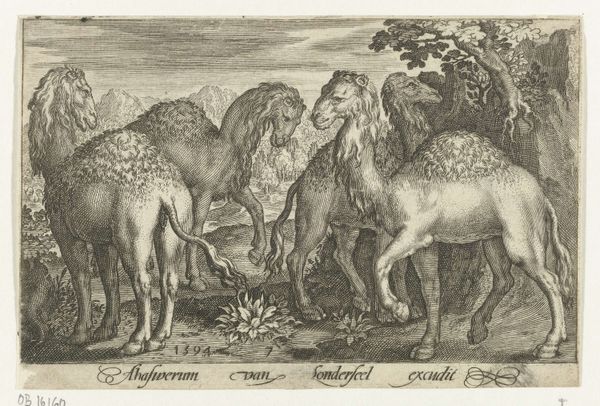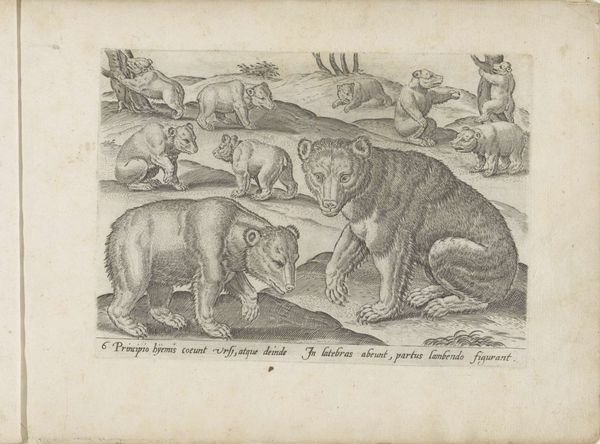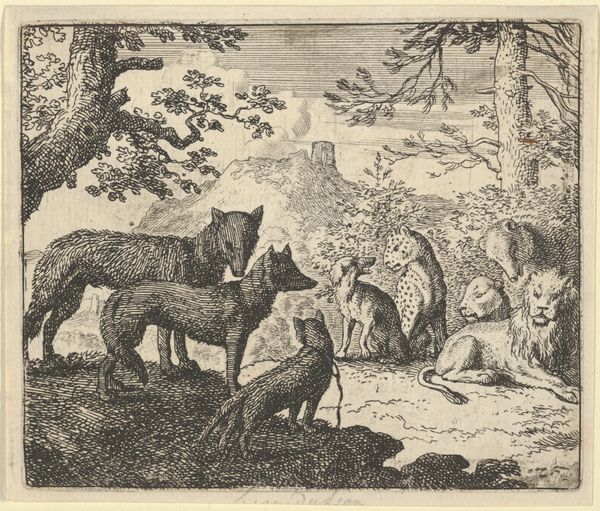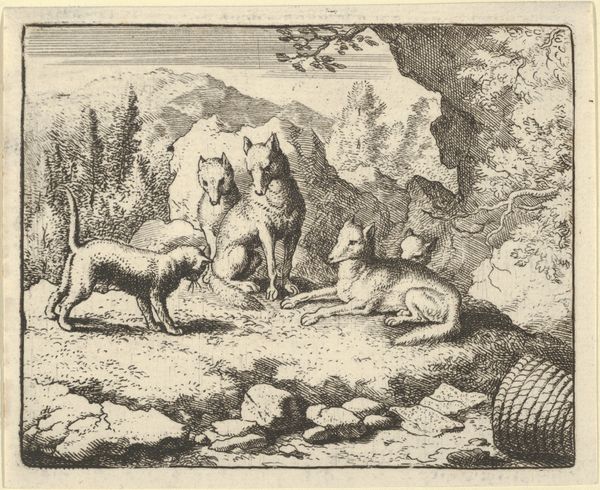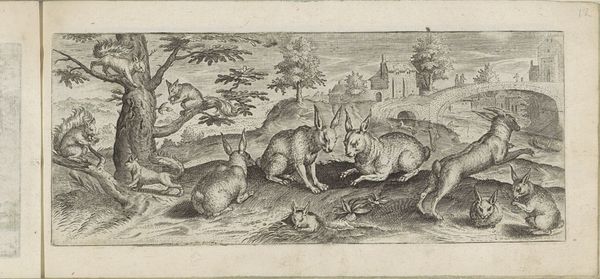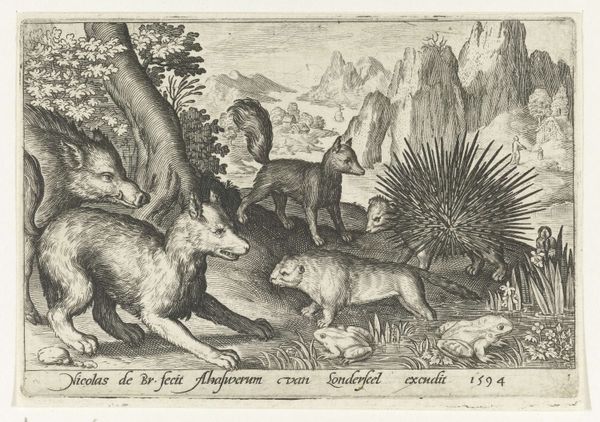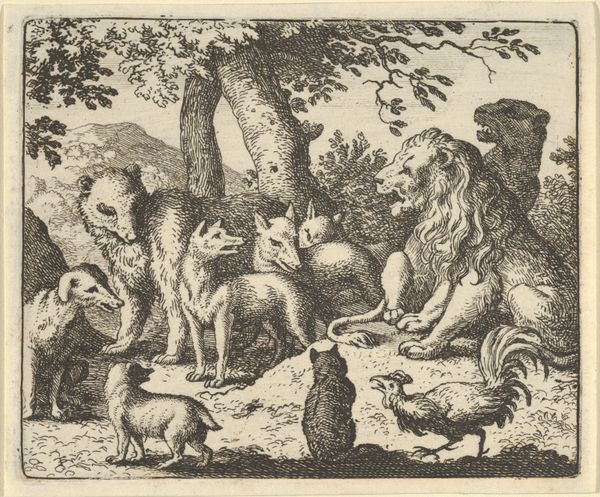
print, engraving
#
baroque
#
animal
# print
#
old engraving style
#
landscape
#
engraving
Dimensions: height 124 mm, width 84 mm
Copyright: Rijks Museum: Open Domain
Curator: At first glance, this print—simply titled "Three Bears"—seems disarmingly…well, adorable. There’s almost a storybook quality to the three cubs. Editor: Adorable but ever so slightly unsettling. Those tiny bear eyes, those thick, shaggy fur rendered by a master engraver—there is an unholy marriage of charming subject matter with the dark sublime of the old masters that just resonates within me! Curator: Precisely! Created sometime between 1594 and 1621 by Nicolaes de Bruyn and held here at the Rijksmuseum, this Baroque engraving gives us insight into how the public perceived the natural world back then. Note the landscape. There's a strange harmony here between this trio and the sheep that wander at the hill's base. How were animals like bears viewed in relation to livestock? Editor: I see that shepherd and his flock so clearly now—completely oblivious to what's up ahead! Nicolaes, darling, how many innocent farmers do you think lost their livestock or lives back then on account of beasts just like these three little darlings. He made this a little bit too innocent! The romanticism here—a total facade, if you think about it. Curator: Well, artistic license might explain the pleasant facade that it gives to viewers today. However, consider that the rise of gardens and parks as emblems of power directly correlates with these printed images circulating. The ability to picture wild, exotic nature became yet another expression of control. In many ways, this connects back to our relationship with them today: seeing something picturesque and wild through printed images is something like capturing, taming, or controlling it through the printed image. Editor: Absolutely! And there they are…the three little protagonists. Looking completely indifferent to all the theory you’re heaping upon their furry little shoulders. Look closer at each cub: they're like three miniature essays on different textures! The burly adult bear is captured well through use of chiaroscuro in their shadows. Curator: It also suggests how the wild was categorized: as something available for scrutiny. But thanks for putting these bears back at center stage. These cubs certainly possess something to inspire reflection today, maybe to remember their presence alongside people from early civilization through now. Editor: You are right—it does make me wish for a grand adventure among these majestic beings. A grand, artistic adventure to behold…
Comments
No comments
Be the first to comment and join the conversation on the ultimate creative platform.
